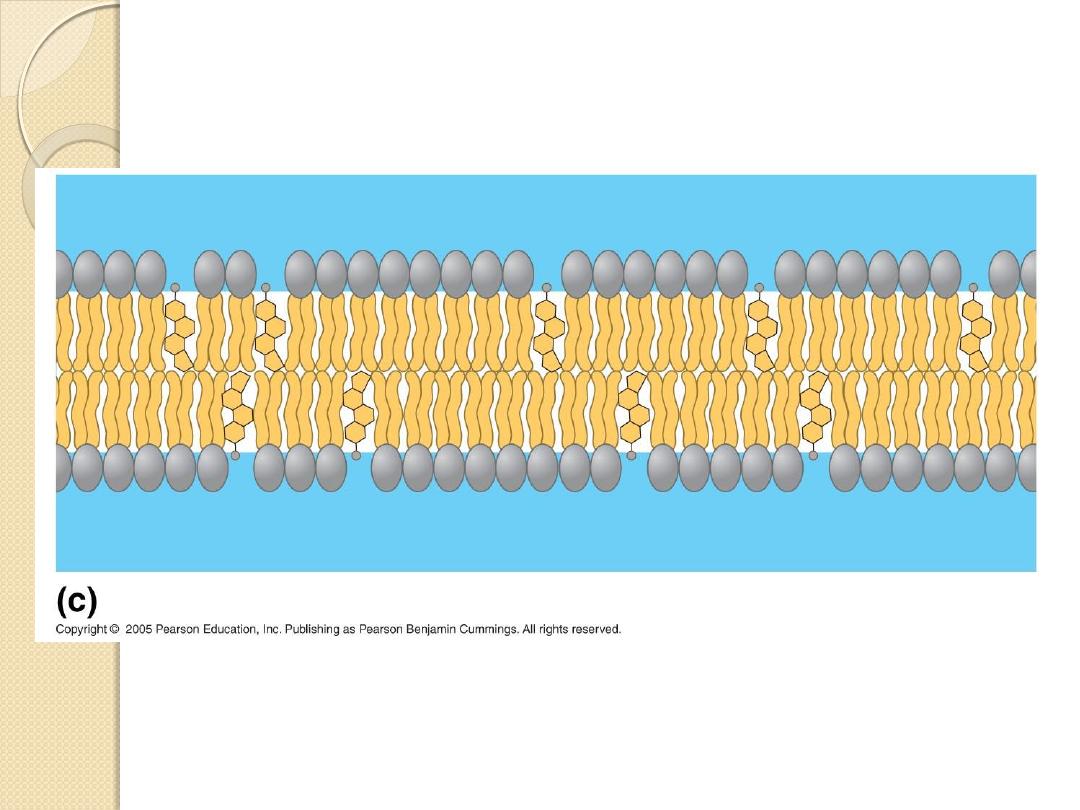
BIOCHEMISTRY
LIPID
BY
Dr. Basil O M Saleh
2
nd
Class college of Medicine ,
Baghdad Univ.
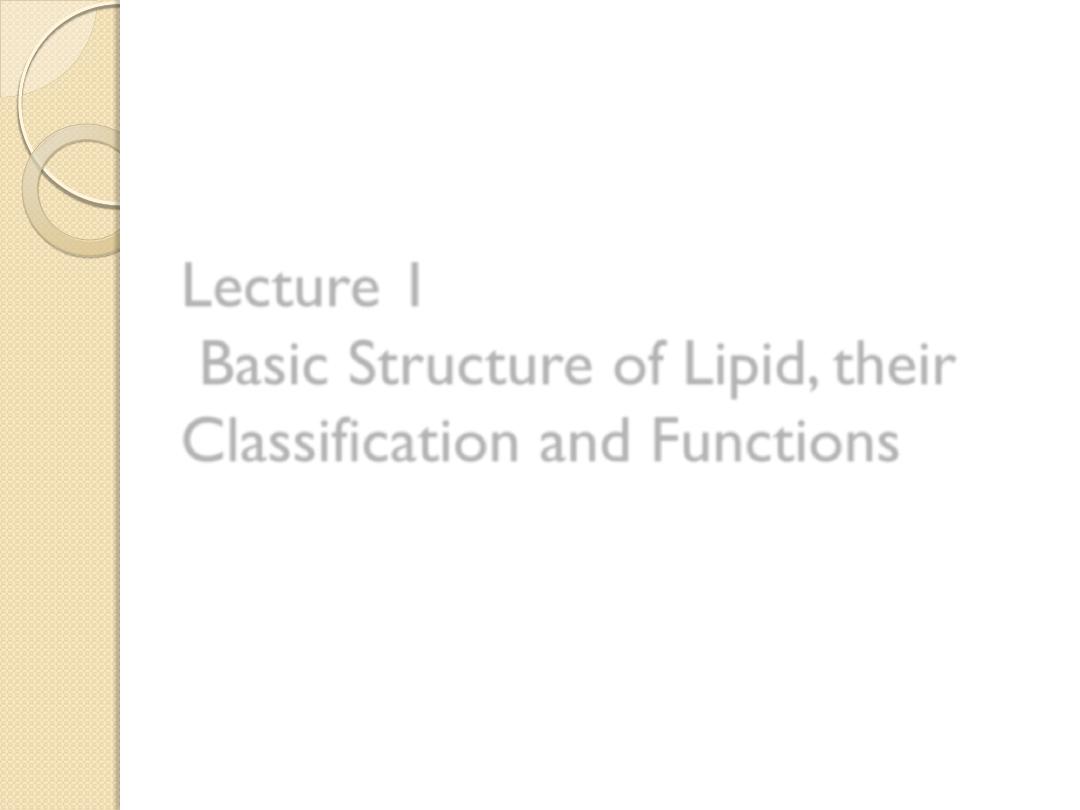
Lecture 1
Basic Structure of Lipid, their
Classification and Functions
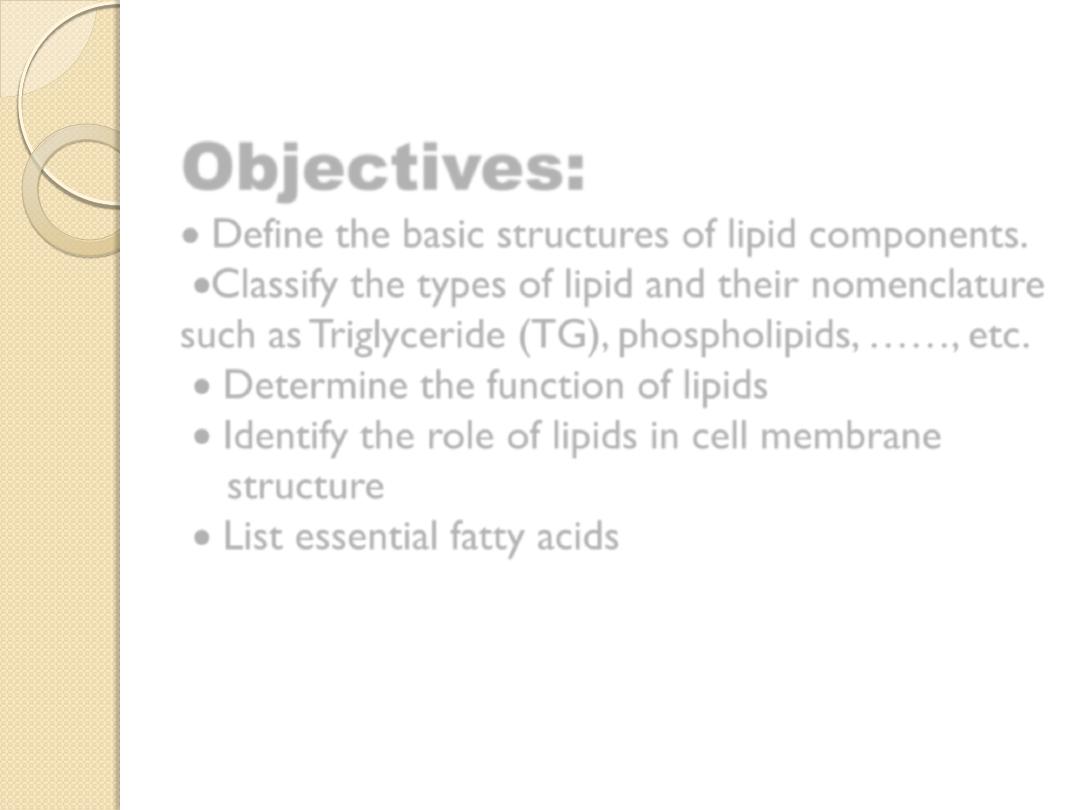
Objectives:
Define the basic structures of lipid components.
Classify the types of lipid and their nomenclature
such as Triglyceride (TG), phospholipids, ……, etc.
Determine the function of lipids
Identify the role of lipids in cell membrane
structure
List essential fatty acids
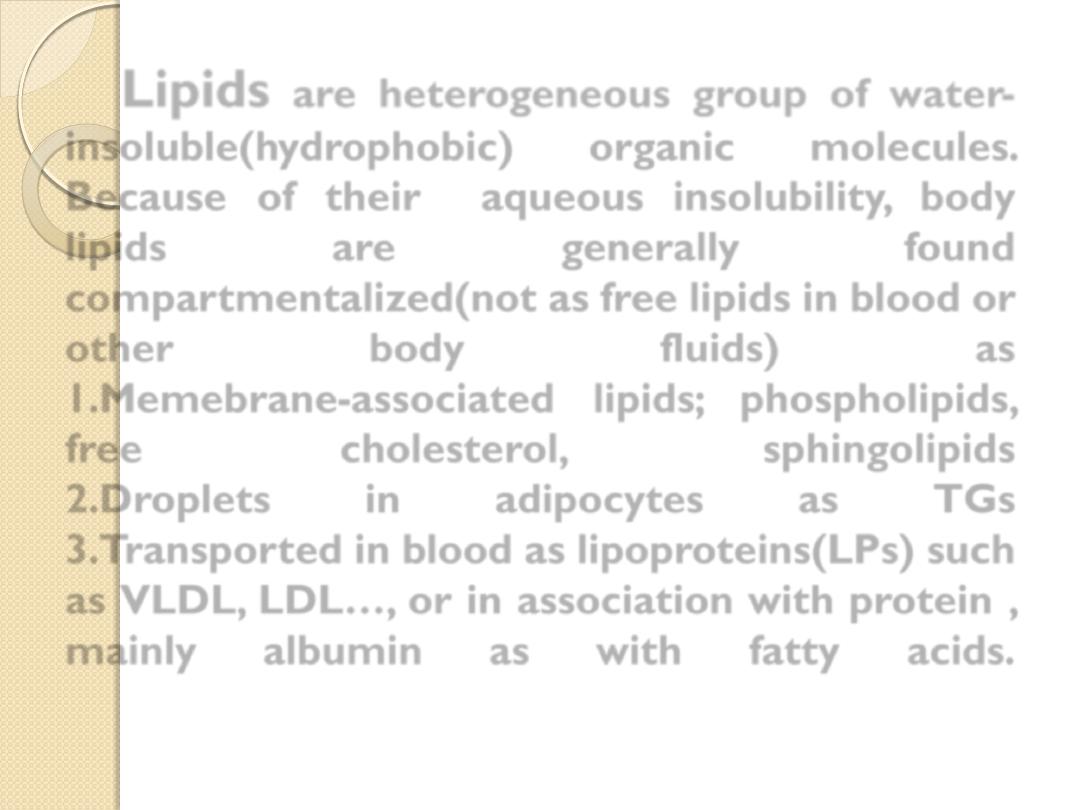
Lipids
are heterogeneous group of water-
insoluble(hydrophobic)
organic
molecules.
Because of their aqueous insolubility, body
lipids
are
generally
found
compartmentalized(not as free lipids in blood or
other
body
fluids)
as
1.Memebrane-associated lipids; phospholipids,
free
cholesterol,
sphingolipids
2.Droplets
in
adipocytes
as
TGs
3.Transported in blood as lipoproteins(LPs) such
as VLDL, LDL…, or in association with protein ,
mainly
albumin
as
with
fatty
acids.
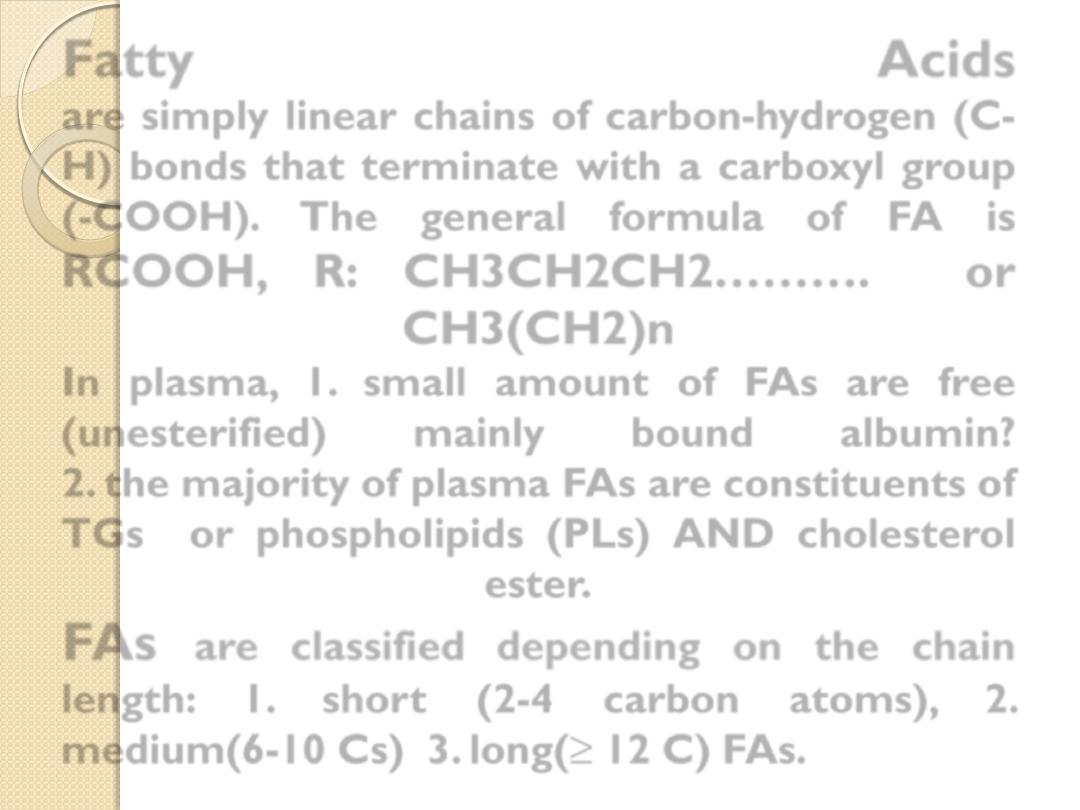
Fatty
Acids
are simply linear chains of carbon-hydrogen (C-
H) bonds that terminate with a carboxyl group
(-COOH). The general formula of FA is
RCOOH, R: CH3CH2CH2………. or
CH3(CH2)n
In plasma, 1. small amount of FAs are free
(unesterified)
mainly
bound
albumin?
2. the majority of plasma FAs are constituents of
TGs or phospholipids (PLs) AND cholesterol
ester.
FAs
are classified depending on the chain
length: 1. short (2-4 carbon atoms), 2.
medium(6-10 Cs) 3. long(≥ 12 C) FAs.
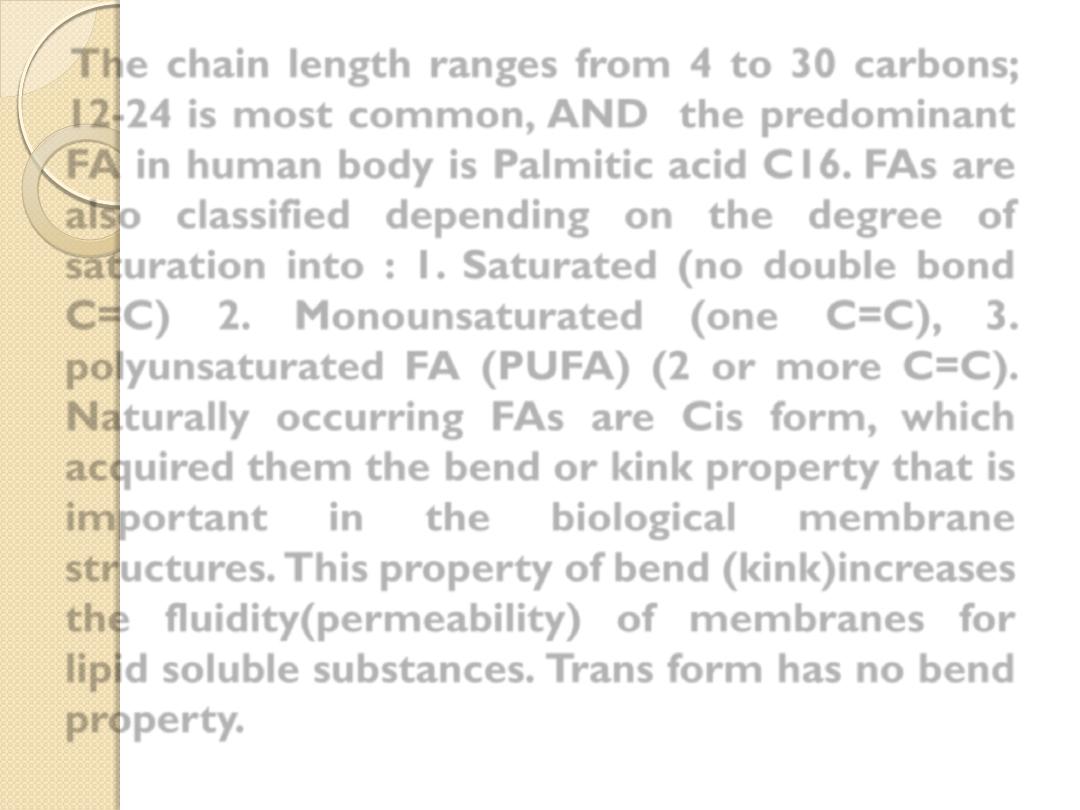
The chain length ranges from 4 to 30 carbons;
12-24 is most common, AND the predominant
FA in human body is Palmitic acid C16.
FAs are
also classified depending on the degree of
saturation into : 1. Saturated (no double bond
C=C) 2. Monounsaturated (one C=C), 3.
polyunsaturated FA (PUFA) (2 or more C=C).
Naturally occurring FAs are Cis form, which
acquired them the bend or kink property that is
important
in
the
biological
membrane
structures. This property of bend (kink)increases
the fluidity(permeability) of membranes for
lipid soluble substances. Trans form has no bend
property.
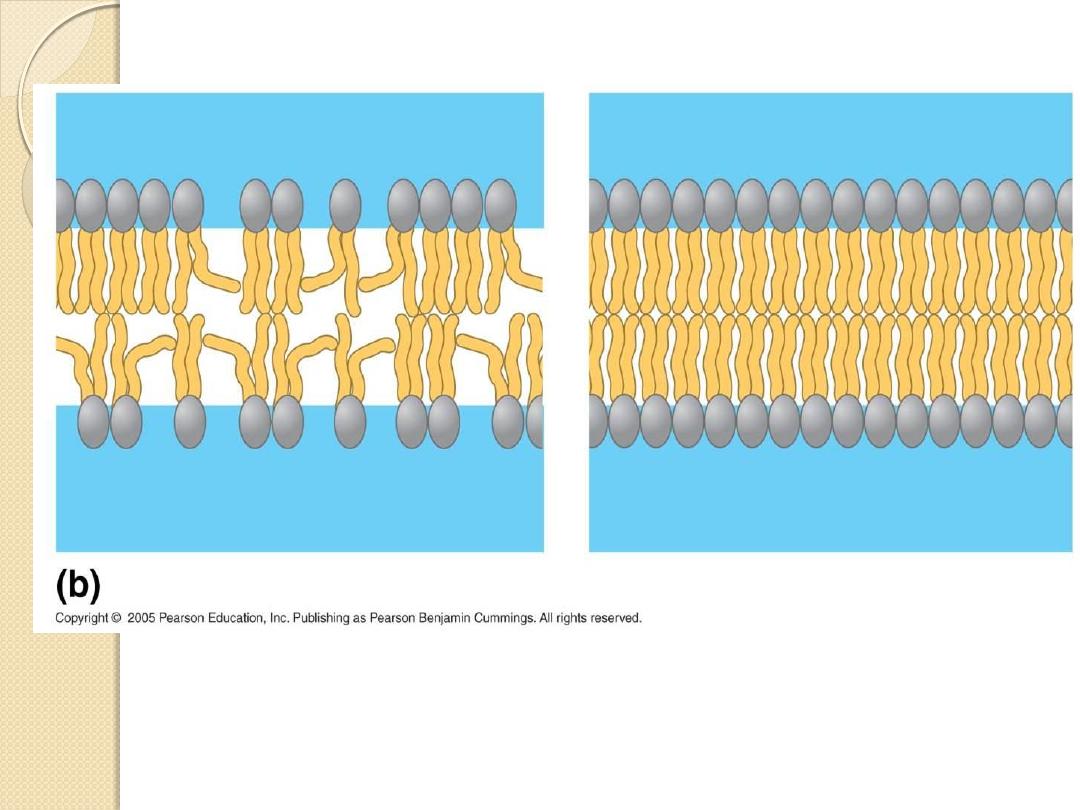
Unsaturated hydrocarbon
tails with kinks
Saturated hydro-
carbon tails
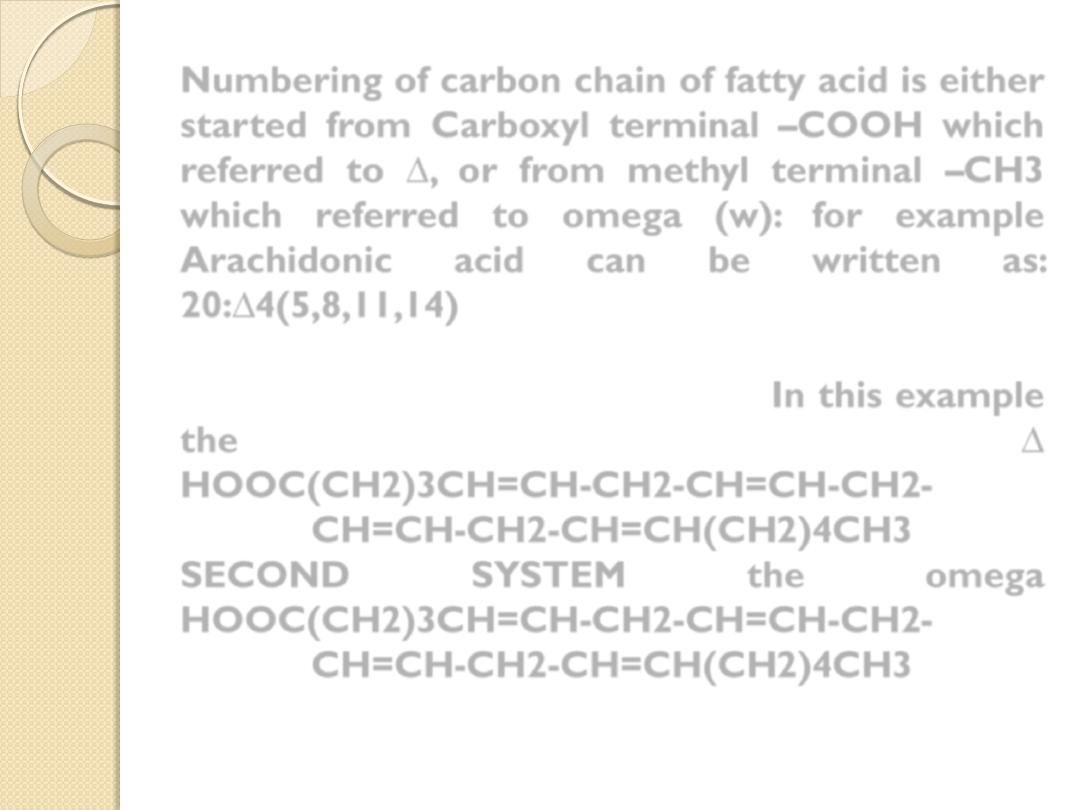
Numbering of carbon chain of fatty acid is either
started from Carboxyl terminal –COOH which
referred to ∆, or from methyl terminal –CH3
which referred to omega (w): for example
Arachidonic
acid
can
be
written
as:
20:∆4(5,8,11,14) or as W-6(n-6), the latter system
means that the first double bond is at carbon 6
beginning from –CH3 terminal . In this example
the
∆
HOOC(CH2)3CH=CH-CH2-CH=CH-CH2-
CH=CH-CH2-CH=CH(CH2)4CH3
SECOND
SYSTEM
the
omega
HOOC(CH2)3CH=CH-CH2-CH=CH-CH2-
CH=CH-CH2-CH=CH(CH2)4CH3

Lipid
are
classified
into
1.Simple
lipids
(Fats
&
Waxes)
2.Compound
or
conjugated
lipids
3.Derived
Lipids
4.Lipid-associating
substances
1. Simple lipid:
The neutral fat which is an
important class of lipids and imply the
Triglyceride which contain three FA molecules
attached to one molecule of glycerol alcohol by
ester bonds. The FAs are usually different. TGs
containing saturated FAs tend to be solid at
room T and do not have kinks in their structure,
while those containing unsaturated cis FAs
forms oil at room T and have kinks property?.
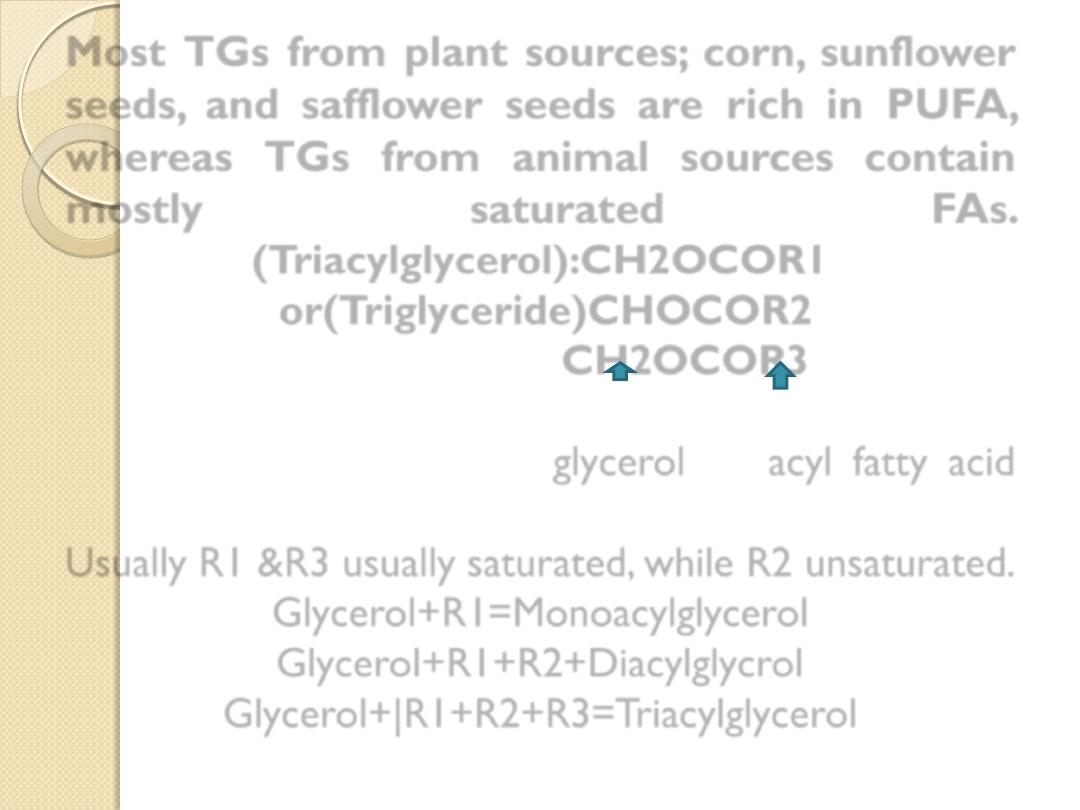
Most TGs from plant sources; corn, sunflower
seeds, and safflower seeds are rich in PUFA,
whereas TGs from animal sources contain
mostly
saturated
FAs.
(Triacylglycerol):CH2O
COR1
or(Triglyceride)CHO
COR2
CH2O
COR3
glycerol acyl fatty acid
Usually
R1 &R3 usually saturated, while R2 unsaturated.
Glycerol+R1=Monoacylglycerol
Glycerol+R1+R2+Diacylglycrol
Glycerol+|R1+R2+R3=Triacylglycerol

2.
Compound
(Complex)
lipids
a. Phospholipids
b. Glycolipids
c.Lipoproteins
Phospholipids
They are
•The foremost structural components
of
biological
membranes
•Serves as emulsifying agents and surface
active
agents
•They are amphipathic molecules (contain both
polar and non-polar groups; polar groups like –
COOH, -NH3, -OH, -SH,….., etc)
–
They are
of two types : 1.
Phosphoglycerides
and
.
2.Phosphosphingolipids (or Sphingolipids).
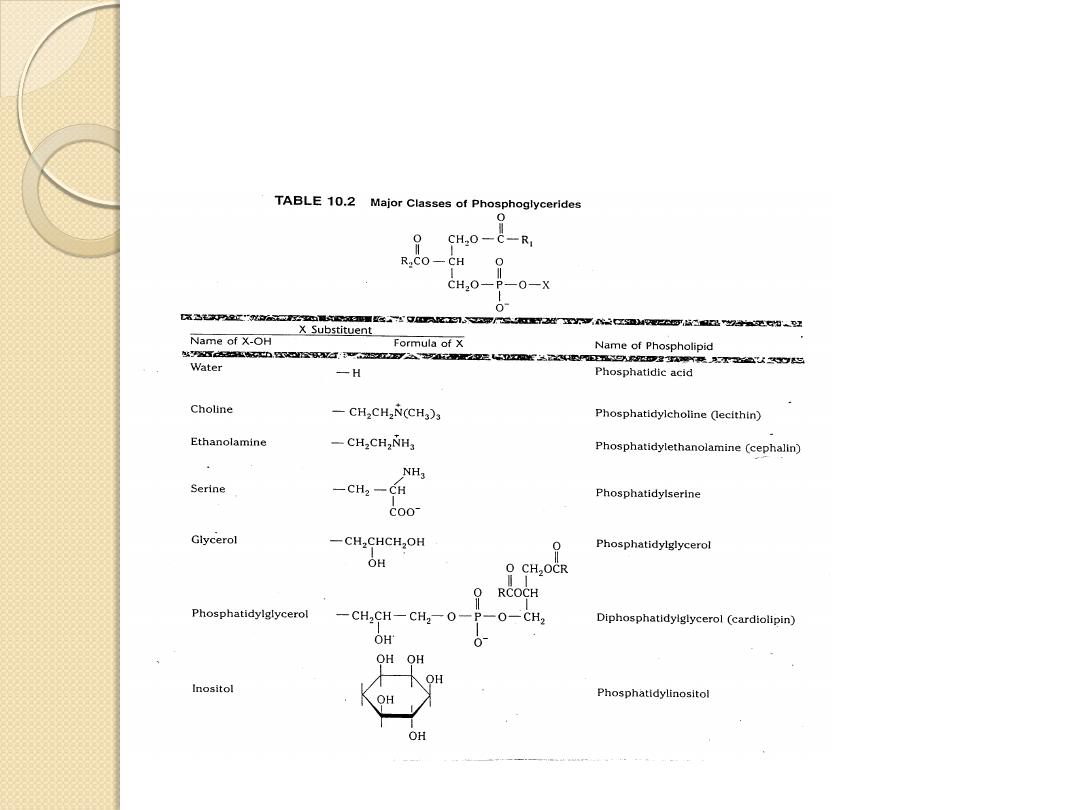
CH2OCOR1 Phosphoglycerolipids:
CHOCOR2 glycerol alcohol+ 2FAs+ N-base
CH2OPO3-b
b: is Nitrogen base
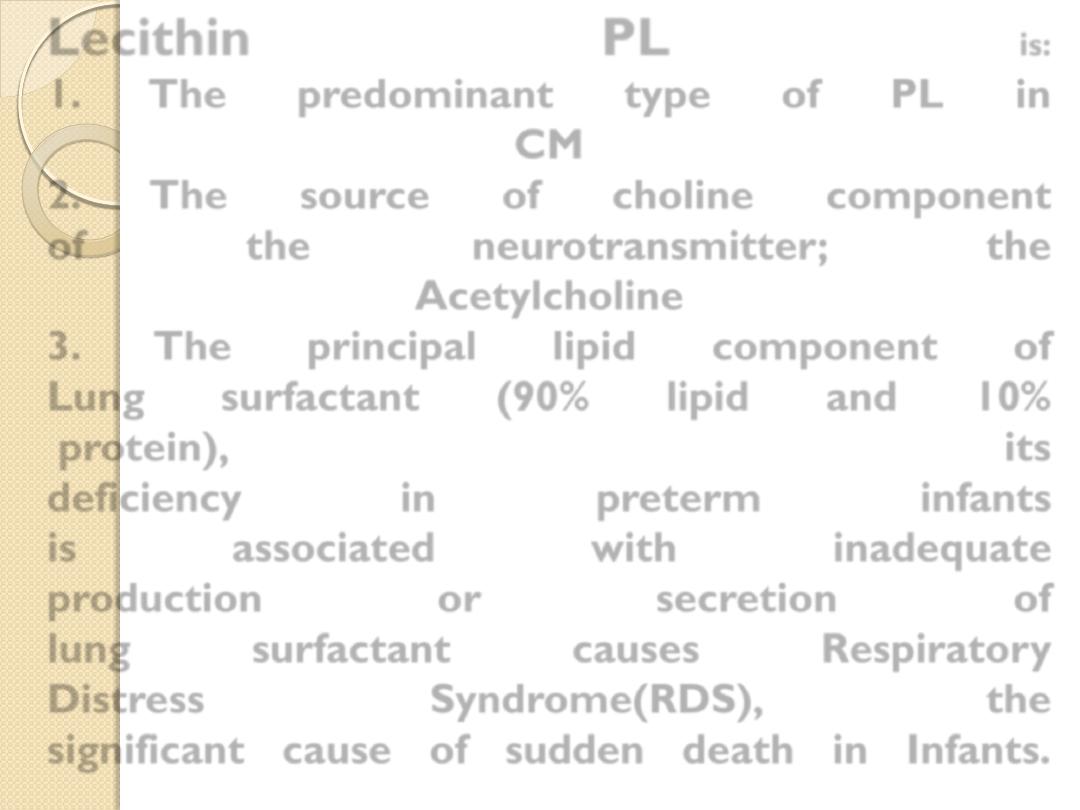
Lecithin
PL
is:
1.
The
predominant
type
of
PL
in
CM
2.
The
source
of
choline
component
of
the
neurotransmitter;
the
Acetylcholine
3.
The
principal
lipid
component
of
Lung
surfactant
(90%
lipid
and
10%
protein),
its
deficiency
in
preterm
infants
is
associated
with
inadequate
production
or
secretion
of
lung
surfactant
causes
Respiratory
Distress
Syndrome(RDS),
the
significant cause of sudden death in Infants.
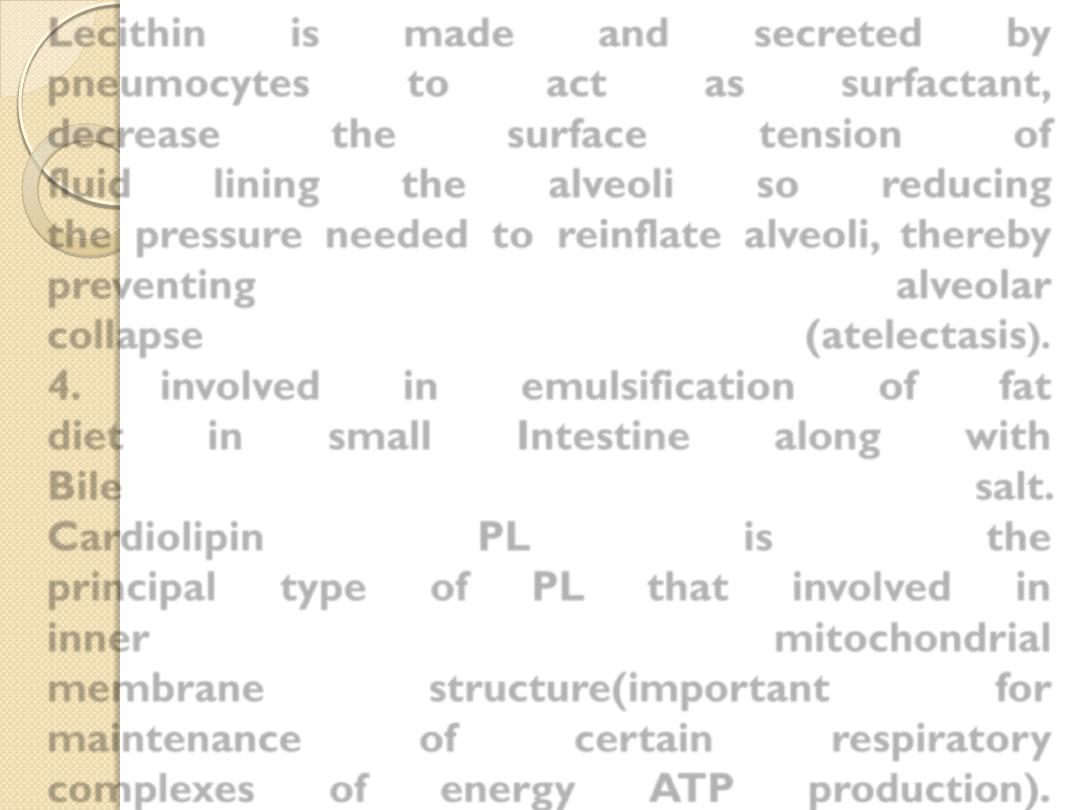
Lecithin
is
made
and
secreted
by
pneumocytes
to
act
as
surfactant,
decrease
the
surface
tension
of
fluid
lining
the
alveoli
so
reducing
the pressure needed to reinflate alveoli, thereby
preventing
alveolar
collapse
(atelectasis
).
4.
involved
in
emulsification
of
fat
diet
in
small
Intestine
along
with
Bile
salt.
Cardiolipin
PL
is
the
principal
type
of
PL
that
involved
in
inner
mitochondrial
membrane
structure(important
for
maintenance
of
certain
respiratory
complexes
of
energy
ATP
production).
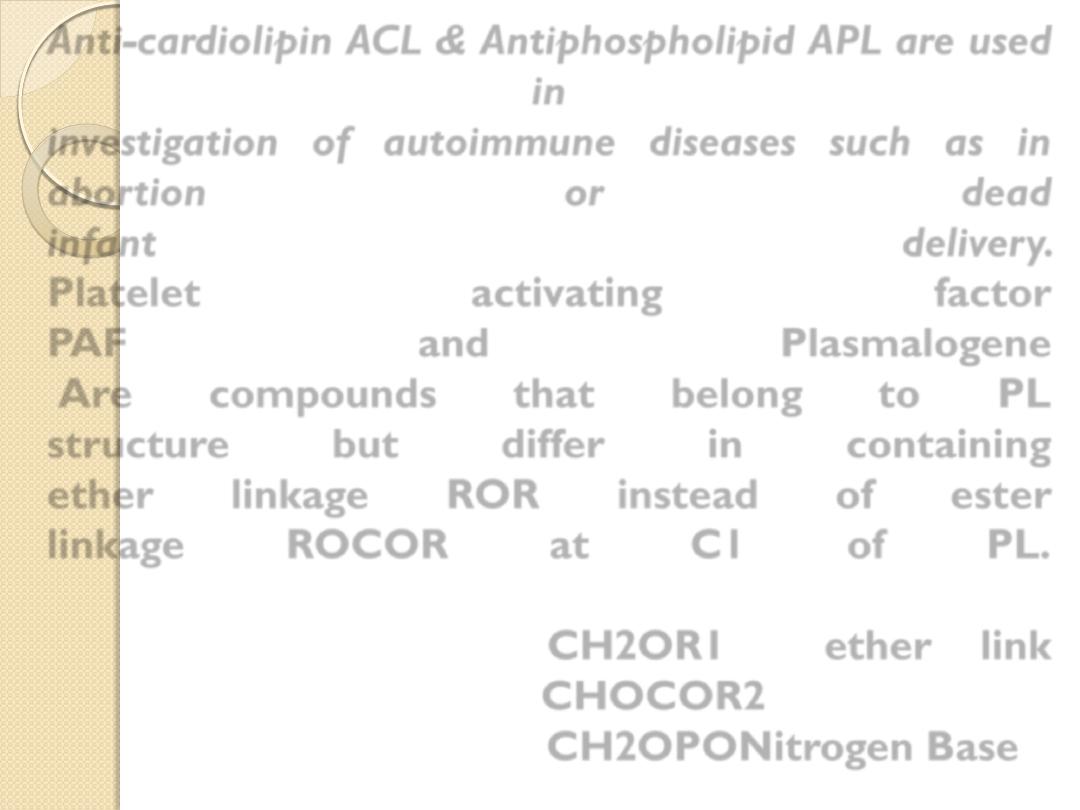
Anti-cardiolipin ACL & Antiphospholipid APL are used
in
investigation of autoimmune diseases such as in
abortion
or
dead
infant
delivery.
Platelet
activating
factor
PAF
and
Plasmalogene
Are
compounds
that
belong
to
PL
structure
but
differ
in
containing
ether
linkage
ROR
instead
of
ester
linkage
ROCOR
at
C1
of
PL.
CH2OR1 ether link
CHOCOR2
CH2OPONitrogen Base
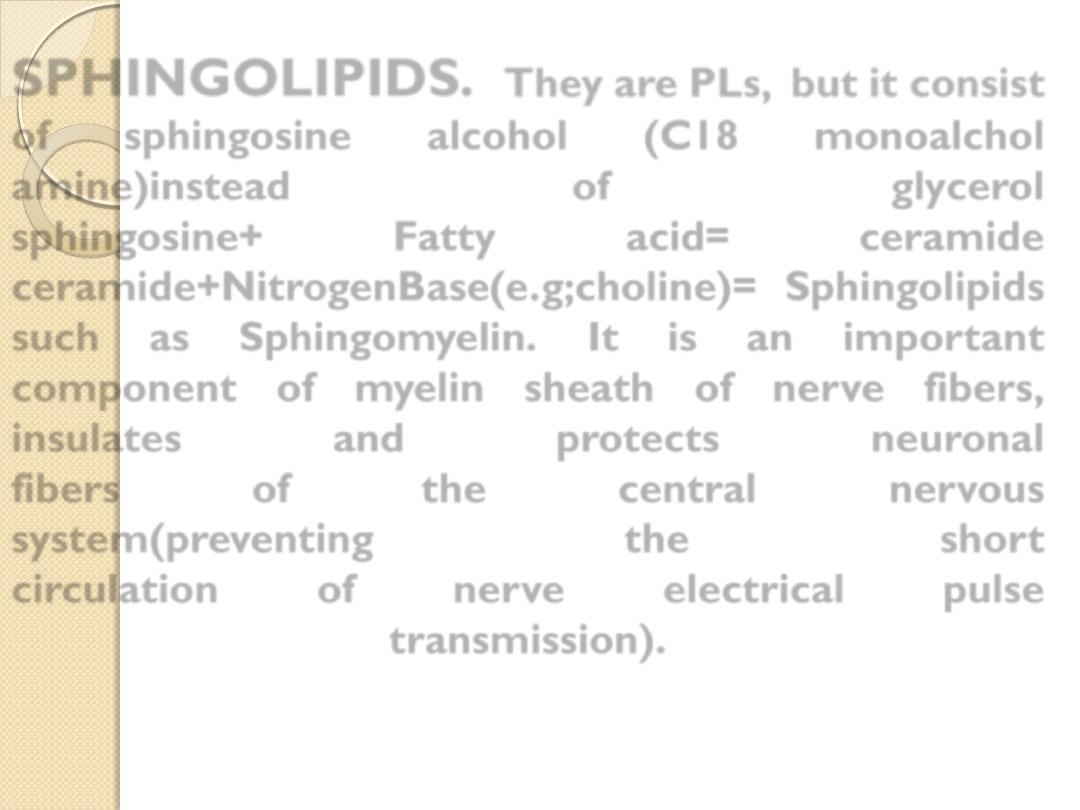
SPHINGOLIPIDS.
They are PLs, but it consist
of
sphingosine
alcohol
(C18
monoalchol
amine)instead
of
glycerol
sphingosine+
Fatty
acid=
ceramide
ceramide+NitrogenBase(e.g;choline)= Sphingolipids
such as
Sphingomyelin.
It is an important
component of myelin sheath of nerve fibers,
insulates
and
protects
neuronal
fibers
of
the
central
nervous
system(preventing
the
short
circulation
of
nerve
electrical
pulse
transmission).
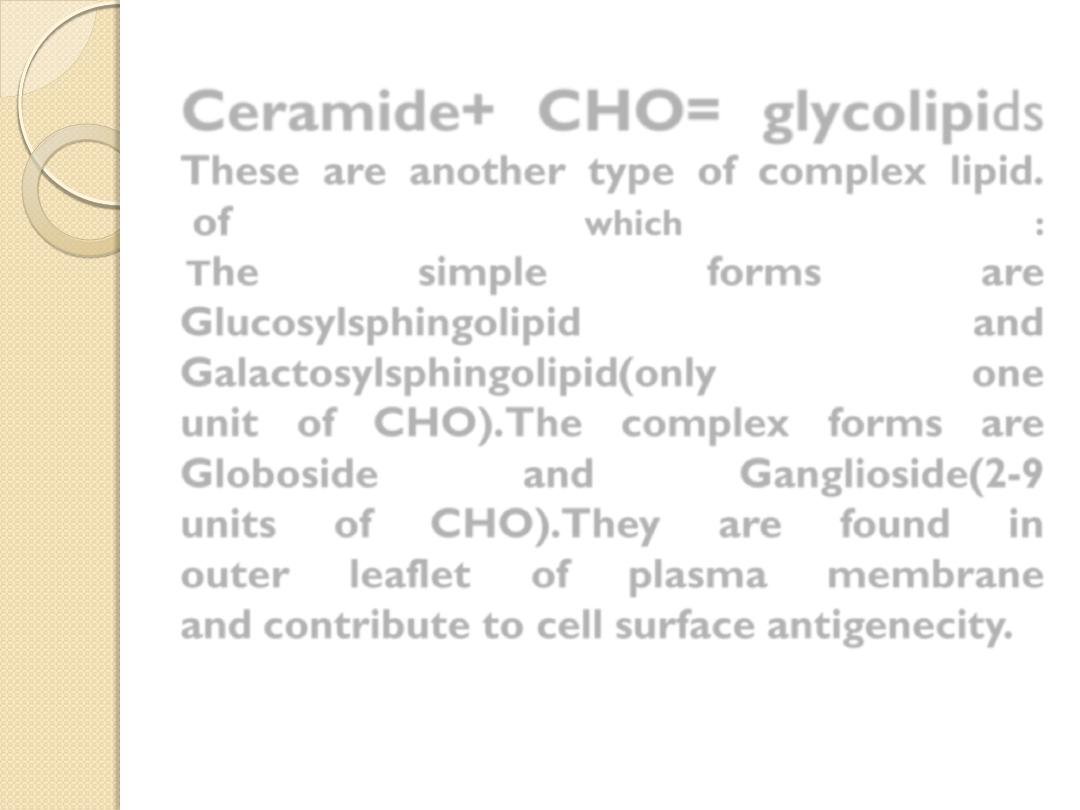
Ceramide+ CHO= glycolipids
These are another type of complex lipid.
of
which
:
T
he
simple
forms
are
Glucosylsphingolipid
and
Galactosylsphingolipid(only
one
unit of CHO).The complex forms are
Globoside
and
Ganglioside(2-9
units of CHO).They are found in
outer leaflet of plasma membrane
and contribute to cell surface antigenecity.
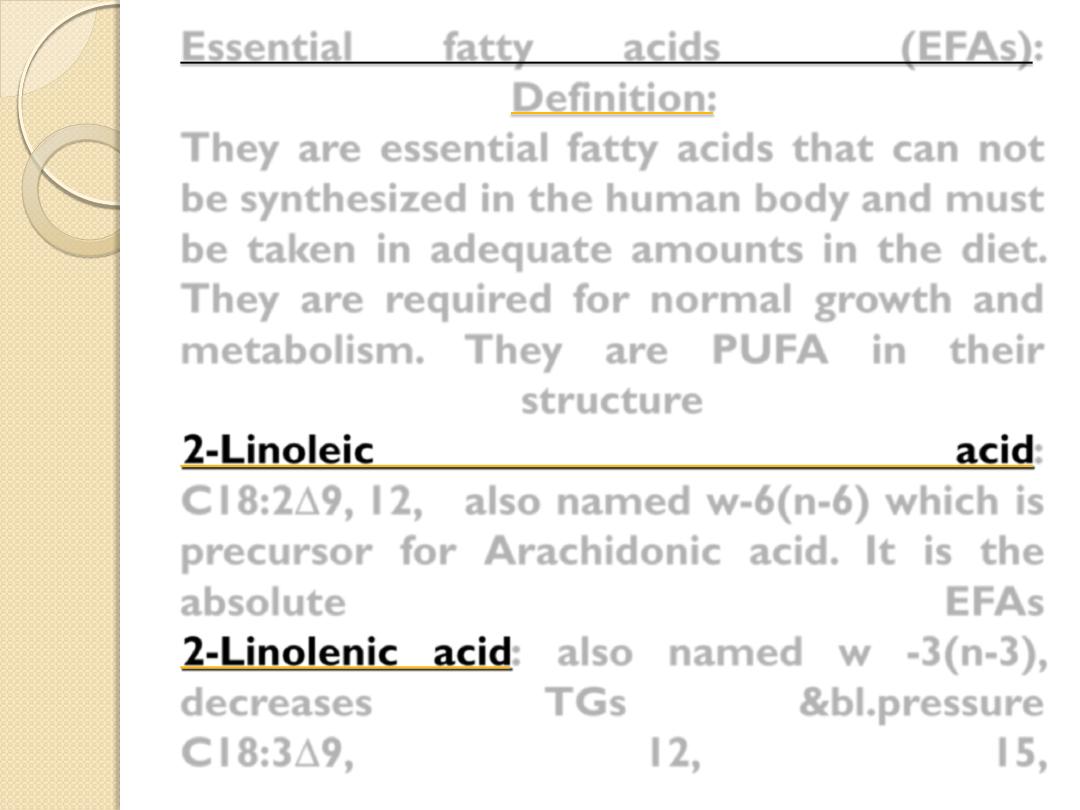
Essential
fatty
acids
(EFAs)
:
Definition:
They are essential fatty acids that can
not
be synthesized
in the human body and must
be taken in adequate amounts in the diet.
They are required for normal growth and
metabolism. They are PUFA in their
structure
2-Linoleic
acid
:
C18:2
9, 12,
also named w-6(n-6) which is
precursor for Arachidonic acid. It is the
absolute
EFAs
2-Linolenic acid
: also named w -3(n-3),
decreases
TGs
&bl.pressure
C18:3
9,
12,
15,
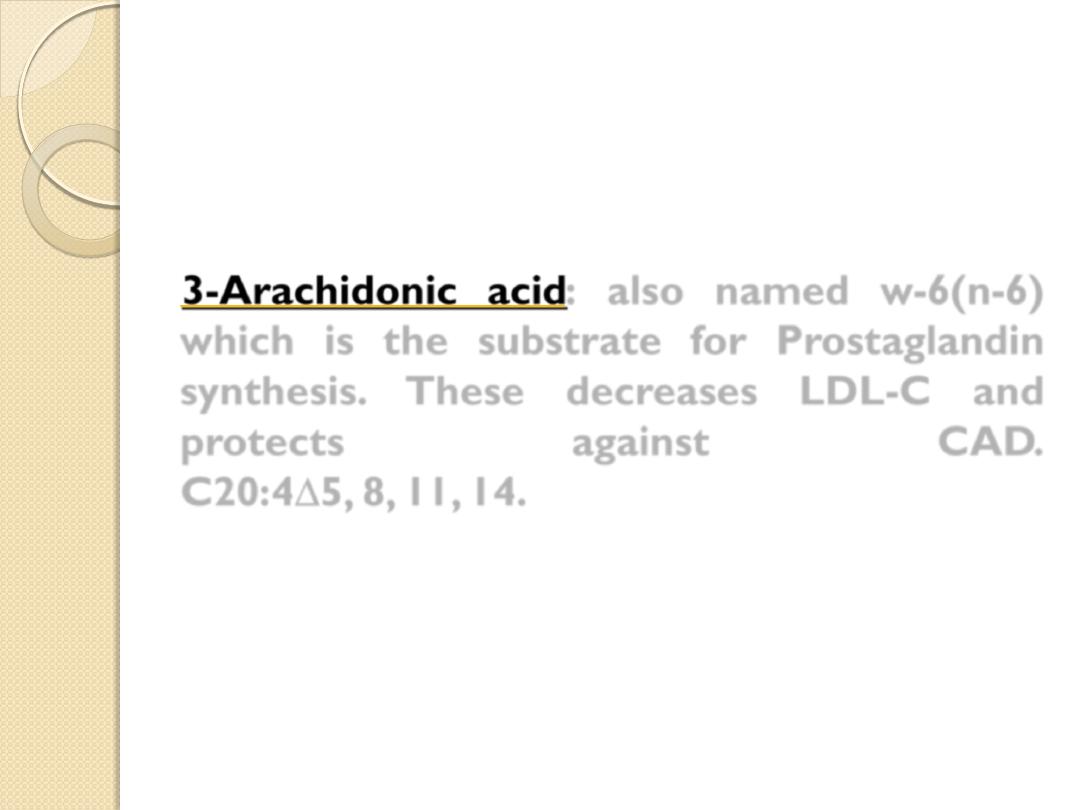
3-Arachidonic acid:
also named w-6(n-6)
which is the substrate for Prostaglandin
synthesis. These decreases LDL-C and
protects
against
CAD.
C20:4
5, 8, 11, 14
.
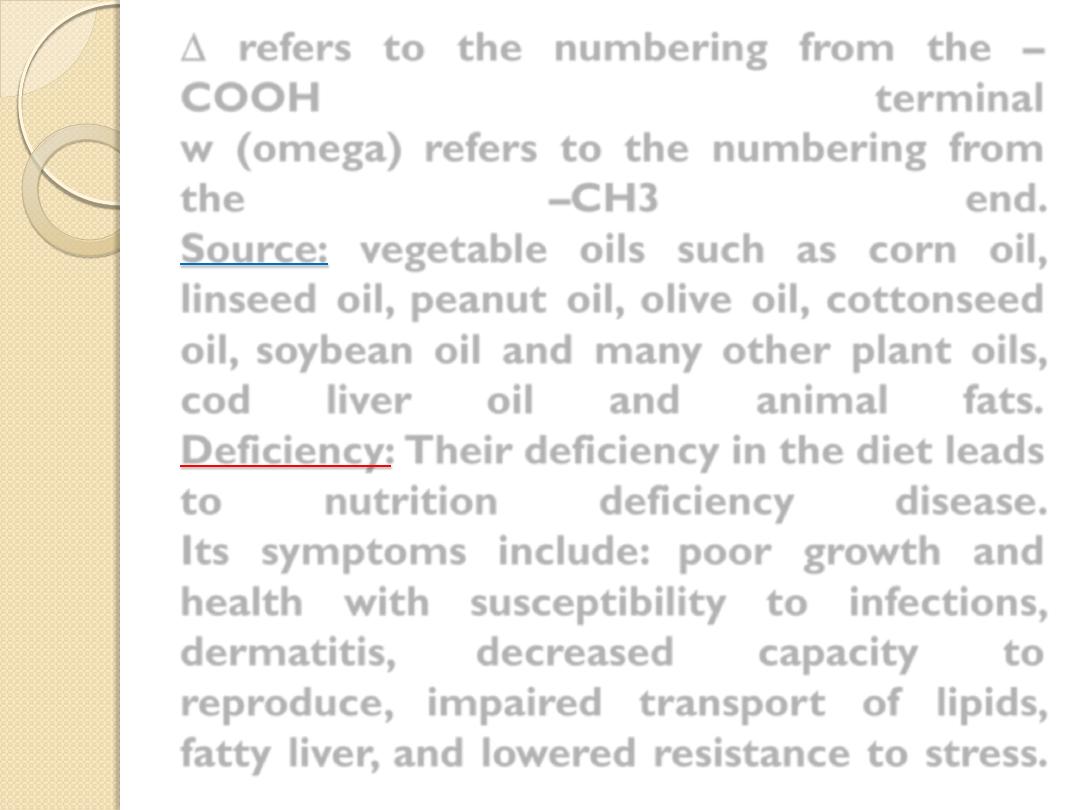
refers to the numbering from the –
COOH
terminal
w (omega) refers to the numbering from
the
–CH3
end.
Source:
vegetable oils such as corn oil,
linseed oil, peanut oil, olive oil, cottonseed
oil, soybean oil and many other plant oils,
cod
liver
oil
and
animal
fats.
Deficiency:
Their deficiency in the diet leads
to
nutrition
deficiency
disease
.
Its
symptoms
include: poor growth and
health with susceptibility to infections,
dermatitis,
decreased
capacity
to
reproduce, impaired transport of lipids,
fatty liver, and lowered resistance to stress.
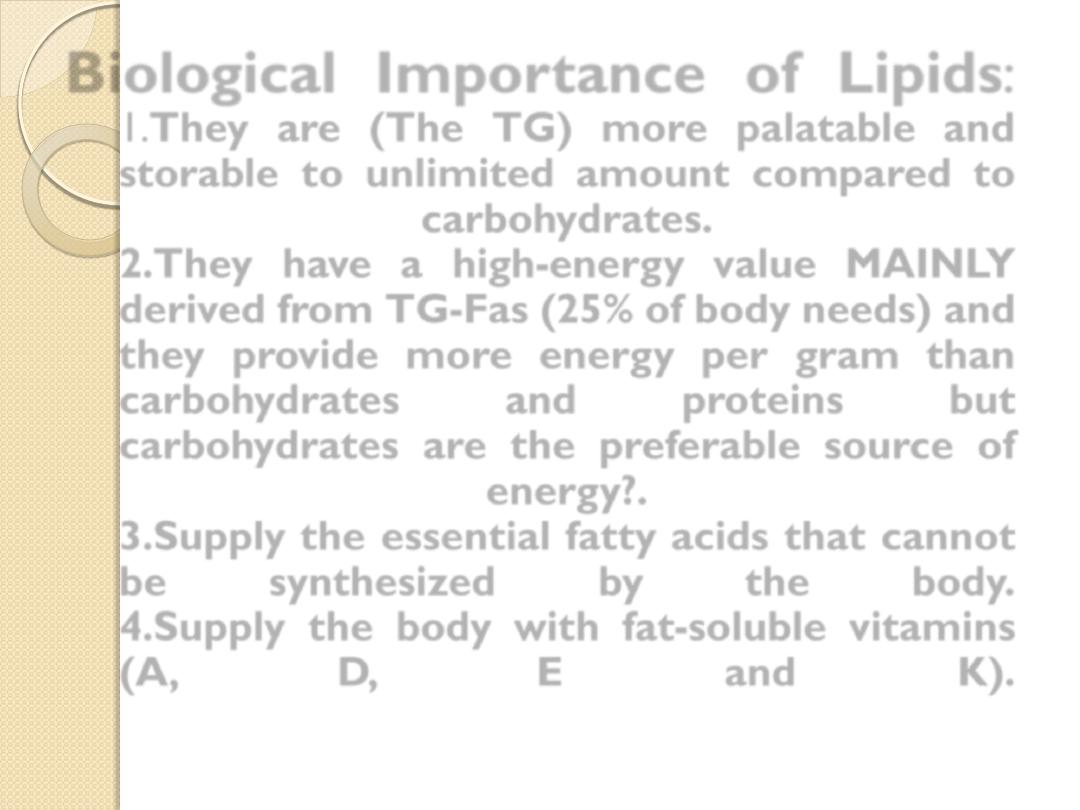
Biological Importance of Lipids:
1.They are (The TG) more palatable and
storable to unlimited amount compared to
carbohydrates.
2.They have a high-energy value MAINLY
derived from TG-Fas (25% of body needs) and
they provide more energy per gram than
carbohydrates
and
proteins
but
carbohydrates are the preferable source of
energy?.
3.Supply the essential fatty acids that cannot
be
synthesized
by
the
body.
4.Supply the body with fat-soluble vitamins
(A,
D,
E
and
K).
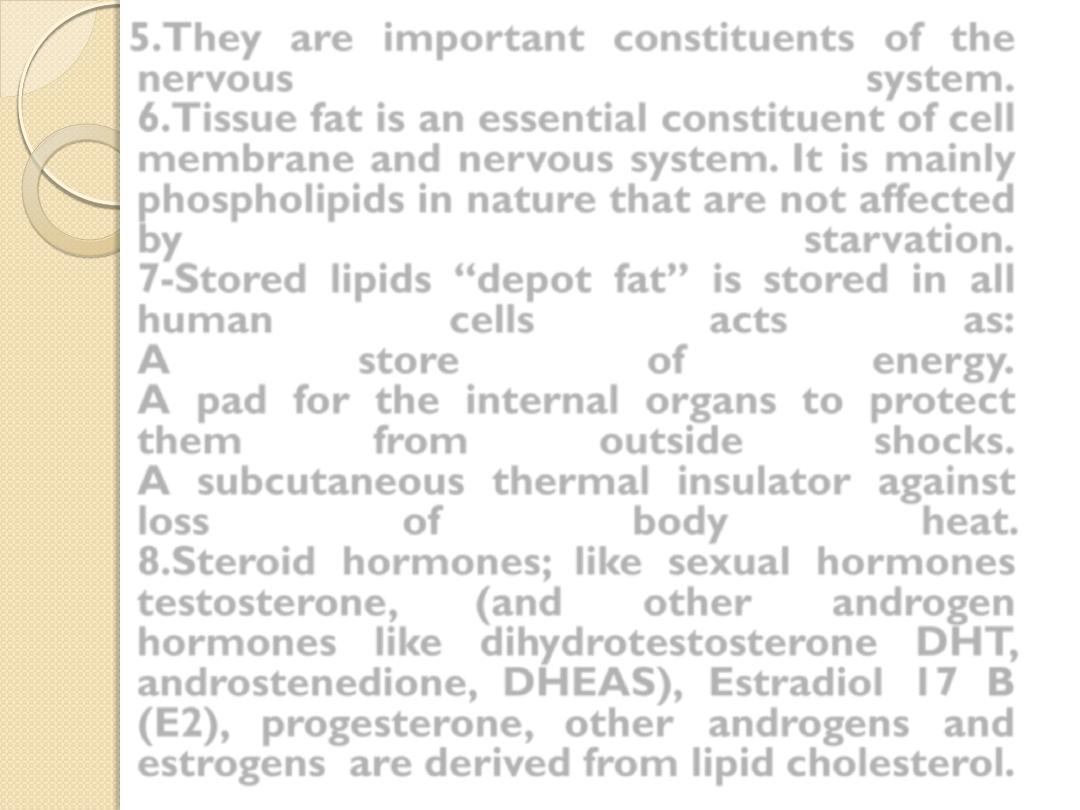
5.They are important constituents of the
nervous
system.
6.Tissue fat is an essential constituent of cell
membrane and nervous system. It is mainly
phospholipids in nature that are not affected
by
starvation.
7-Stored lipids
“depot fat” is stored in all
human
cells
acts
as:
A
store
of
energy.
A pad for the internal organs to protect
them
from
outside
shocks.
A subcutaneous thermal insulator against
loss
of
body
heat.
8.Steroid hormones; like sexual hormones
testosterone,
(and
other
androgen
hormones like dihydrotestosterone DHT,
androstenedione, DHEAS), Estradiol 17 B
(E2), progesterone, other androgens and
estrogens are derived from lipid cholesterol.
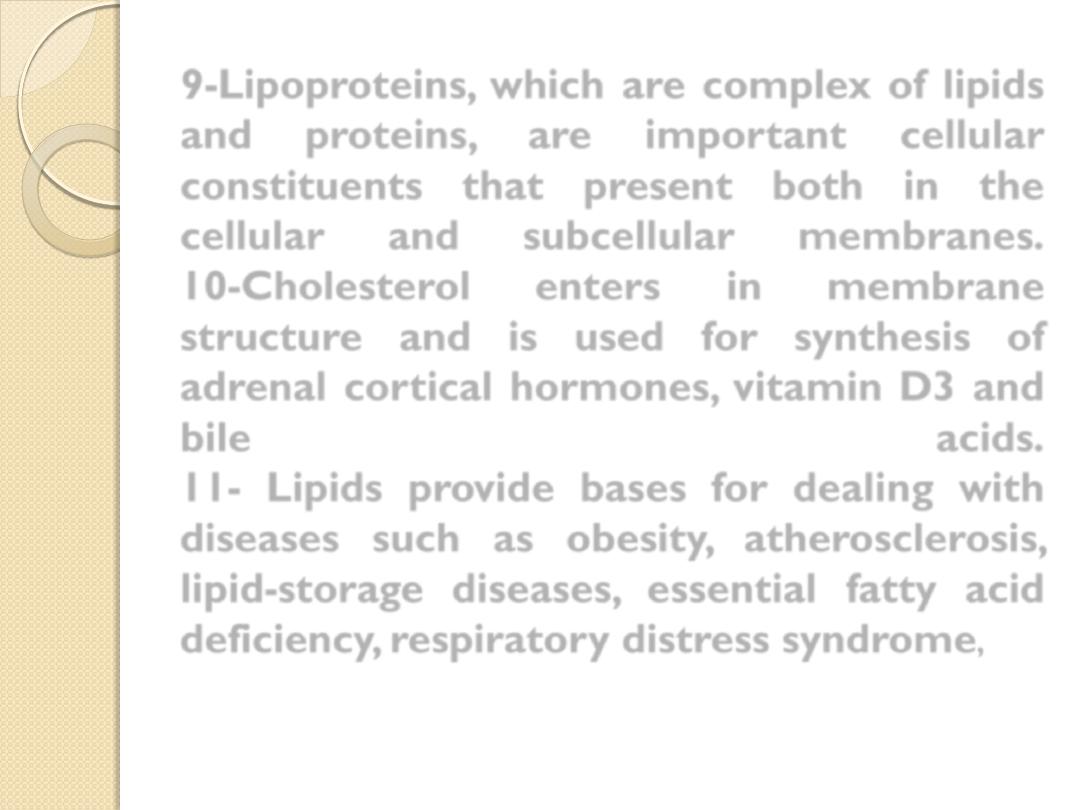
9-Lipoproteins
, which are complex of lipids
and proteins, are important cellular
constituents that present both in the
cellular
and
subcellular
membranes.
10
-Cholesterol
enters
in
membrane
structure and is used for synthesis of
adrenal cortical hormones, vitamin D3 and
bile
acids.
11- Lipids
provide bases for dealing with
diseases such as
obesity, atherosclerosis
,
lipid-storage diseases, essential fatty acid
deficiency, respiratory distress syndrome,
